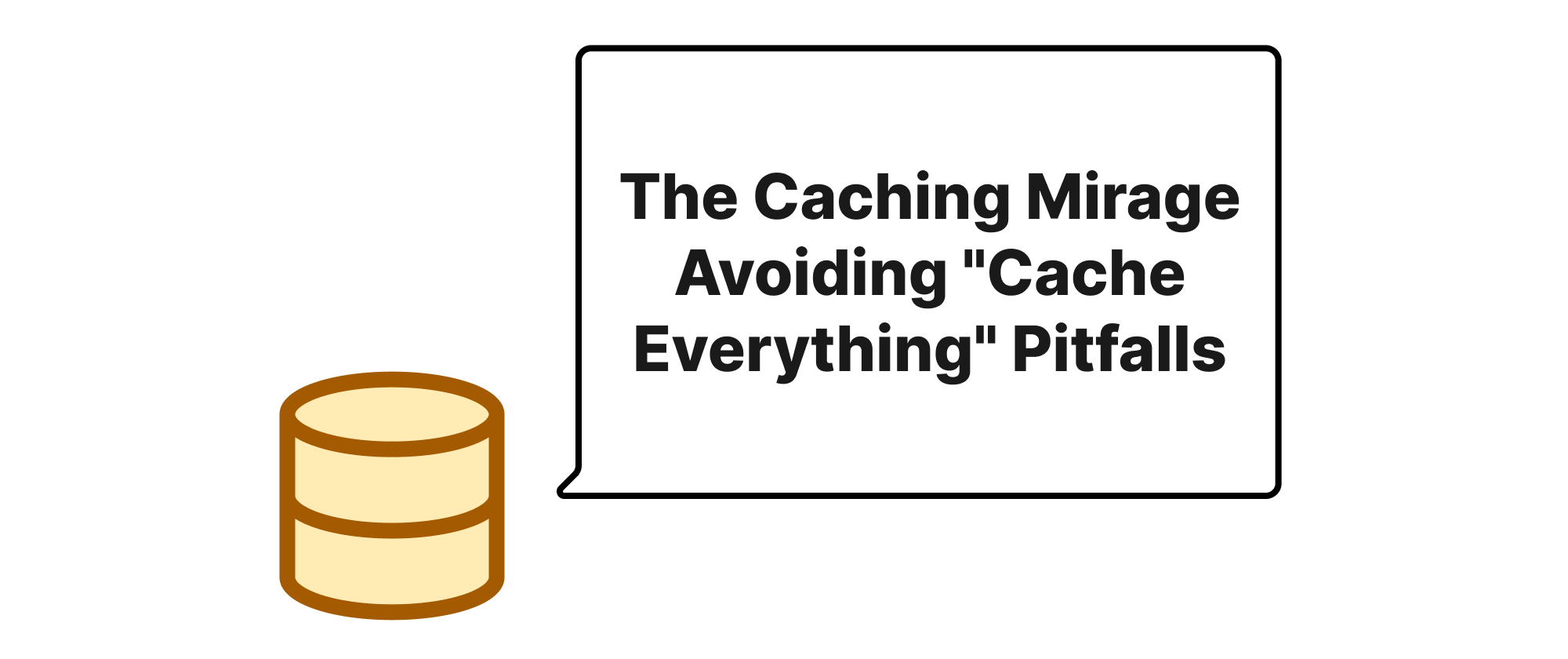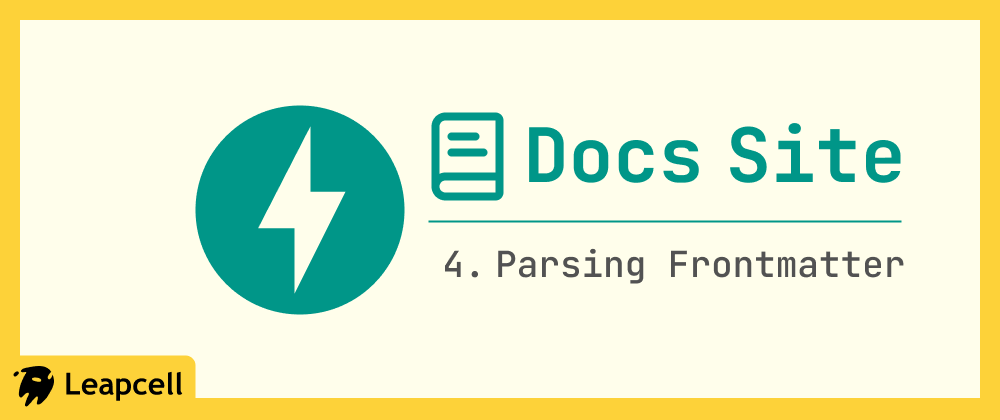The Caching Mirage Avoiding "Cache Everything" Pitfalls
James Reed
Infrastructure Engineer · Leapcell

Introduction
In the relentless pursuit of high performance and low latency, caching has become an indispensable tool in the database developer's arsenal. By storing frequently accessed data closer to the application, we can bypass slow database operations, dramatically improving response times and reducing database load. However, this powerful optimization often comes with a subtle trap: the "cache everything" mentality. The allure of instant performance gains can lead developers to blindly cache data without a deep understanding of its implications. This indiscriminate approach, while seemingly beneficial in the short term, inevitably breeds data inconsistency, explodes system complexity, and ultimately degrades the very performance it sought to enhance. This article will delve into the perils of this "caching mirage" and guide you toward a more thoughtful and effective caching strategy.
Core Concepts for Smart Caching
Before we dissect the problems inherent in "cache everything," let's establish a common understanding of key caching terminology that will be crucial for our discussion.
- Cache Hit/Miss: A cache hit occurs when requested data is found in the cache, allowing for a fast retrieval. A cache miss means the data is not in the cache, requiring a slower fetch from the primary data source (e.g., database).
- Cache Coherency/Consistency: This refers to the state where all cached copies of data are consistent with the original data source. Inconsistent caches present stale or incorrect information, which is a major problem we aim to avoid.
- Cache Invalidation: The process of removing or marking data in the cache as stale when the underlying data source changes. Effective invalidation strategies are paramount for maintaining consistency.
- Time-to-Live (TTL): A mechanism to automatically expire cached data after a specified duration. This helps prevent caches from holding indefinitely stale data, although it doesn't guarantee immediate consistency upon data change.
- Write-Through/Write-Back/Write-Around: These are different caching strategies for handling write operations.
- Write-Through: Data is written both to the cache and the primary data store simultaneously. This ensures consistency but can add latency to write operations.
- Write-Back: Data is written only to the cache, and eventually, the cache writes it to the primary data store. This offers low write latency but introduces a risk of data loss if the cache fails before data is persisted.
- Write-Around: Data is written directly to the primary data store, bypassing the cache. Only read data is cached. This is useful for data that is written once but rarely read.
The Perils of Caching Everything
The "cache everything" approach typically manifests as developers indiscriminately putting all database reads into a cache, often without considering data volatility, consistency requirements, or the overhead of cache management.
Data Inconsistency: The Silent Killer
Imagine an e-commerce platform where product prices are cached. If a product's price is updated in the database but the old price remains in the cache, customers will see outdated information, potentially leading to financial losses or a poor user experience. This is the most critical issue arising from blind caching.
Problem: When data is updated in the database, the corresponding cached entry becomes stale. Without a robust invalidation mechanism, the application continues to serve outdated data.
Example Scenario (Imperative Invalidations):
Let's assume a simple product service that caches product details.
import redis import json import time # Initialize Redis client (our cache) cache = redis.Redis(host='localhost', port=6379, db=0) # Simulate a database database = { "product_1": {"name": "Laptop", "price": 1200.00, "stock": 10}, "product_2": {"name": "Monitor", "price": 300.00, "stock": 5}, } def get_product_from_db(product_id): print(f"Fetching {product_id} from DB...") return database.get(product_id) def get_product(product_id): cached_data = cache.get(f"product:{product_id}") if cached_data: print(f"Cache hit for {product_id}") return json.loads(cached_data) product_data = get_product_from_db(product_id) if product_data: print(f"Caching {product_id}") cache.set(f"product:{product_id}", json.dumps(product_data), ex=300) # Cache for 5 minutes return product_data def update_product_db(product_id, new_data): print(f"Updating {product_id} in DB to {new_data}") database[product_id].update(new_data) # BLIND CACHE: No invalidation here! # --- Simulation --- print("--- Initial Reads ---") print(get_product("product_1")) # DB fetch, cache print(get_product("product_1")) # Cache hit print("\n--- Update Product Price ---") update_product_db("product_1", {"price": 1250.00}) print("\n--- Subsequent Read (STALE DATA!) ---") print(get_product("product_1")) # Still returns old price from cache!
In this example, after update_product_db is called, get_product still returns the old price for product_1 because the cache entry was not invalidated. This is a classic data inconsistency scenario.
Solution: Cache Invalidation Strategies
-
Write-Through with Invalidation: When an update occurs, write to the database and then directly invalidate the corresponding cache entry. This keeps the cache consistent.
# ... (previous code) ... def update_product_with_invalidation(product_id, new_data): print(f"Updating {product_id} in DB to {new_data}") database[product_id].update(new_data) print(f"Invalidating cache for {product_id}") cache.delete(f"product:{product_id}") # Invalidate the cache entry print("\n--- Update Product Price with Invalidation ---") update_product_with_invalidation("product_1", {"price": 1250.00}) print("\n--- Subsequent Read (Correct Data) ---") print(get_product("product_1")) # DB fetch, then cache the new data print(get_product("product_1")) # Cache hit with correct dataThis is a common and effective strategy for frequently updated single items.
-
Publisher-Subscriber (Pub/Sub) for Distributed Invalidation: For distributed systems or complex invalidation patterns (e.g., updating one item affects many cached aggregates), a Pub/Sub model (using Redis Pub/Sub, Kafka, etc.) can be used. When data changes, a message is published, and all caching services subscribe to these messages to invalidate their local caches.
-
Versioned Data/Optimistic Locking: Store a version number or timestamp with cached data. When fetching, compare the version with the database. If they differ, the cache entry is stale. This adds read overhead but provides strong consistency guarantees.
Complexity Explosion: The Maintenance Nightmare
Caching itself introduces a new layer to your architecture. Caching everything magnifies this complexity, making your system harder to understand, debug, and maintain.
Issues:
- Increased Code Surface Area: Every data access now needs to consider the cache.
- Debugging Headaches: Is the bug due to the application logic, the database, or the cache returning stale data?
- Cache Management Overhead: Deciding eviction policies, managing memory, monitoring cache hit rates, scaling the cache infrastructure.
- Cache Key Design: Designing effective and non-colliding cache keys for various data types and retrieval patterns becomes a significant challenge.
Example: Complex Cache Key Generation
If you cache not just individual products but also product lists filtered by category, price range, etc., your cache keys can become very elaborate.
def get_products_by_category(category_id, min_price=None, max_price=None, sort_order="asc"): # Complex cache key to encompass all query parameters cache_key_parts = [ "products_by_category", f"cat:{category_id}", f"min_p:{min_price if min_price else 'none'}", f"max_p:{max_price if max_price else 'none'}", f"sort:{sort_order}" ] cache_key = ":".join(cache_key_parts) cached_data = cache.get(cache_key) if cached_data: print(f"Cache hit for category:{category_id}") return json.loads(cached_data) # Simulate fetching from DB with complex query db_results = [ p for p in database.values() if p.get("category_id") == category_id and \ (min_price is None or p["price"] >= min_price) and \ (max_price is None or p["price"] <= max_price) ] # Apply sorting... print(f"Caching category:{category_id}") cache.set(cache_key, json.dumps(db_results), ex=600) # Cache for 10 minutes return db_results
When product_1's price or category changes, which cache keys need to be invalidated? Just product_1's individual entry, or all products_by_category keys that might contain product_1? This is where complexity explodes, and careful consideration is needed. Often, for aggregate queries, simpler strategies like TTLs or invalidating all related aggregate caches upon any underlying change are adopted, balancing eventual consistency with practical complexity.
Resource Waste: When Caching Becomes a Burden
Caching consumes resources: memory for the cached data, network bandwidth for cache operations, and CPU cycles for serialization/deserialization and cache management. Caching rarely accessed or highly volatile data is a waste of these resources.
Issues:
- Memory Pressure: Caching too much data can exhaust the cache server's memory, leading to aggressive eviction of truly valuable data or even crashes.
- Increased Network Latency: While caches reduce DB hits, redundant cache hits for non-critical or static data can still add network round trips between application and cache.
- Serialization/Deserialization Tax: Storing complex objects in string or JSON format requires serialization on write and deserialization on read, consuming CPU cycles.
Solution: Selective Caching Based on Access Patterns and Volatility
Instead of caching everything, analyze your data access patterns:
- Monitor Hot Spots: Identify your hottest data – the entities or queries that are accessed most frequently. Caching these will yield the highest returns. Tools like database slow query logs, APM tools, and request logs can help identify these.
- Consider Data Volatility:
- Highly Volatile Data (e.g., real-time stock quotes, active user session data): Caching might be detrimental, as it's likely to be stale immediately. Direct database access or very short TTLs might be more appropriate.
- Moderately Volatile Data (e.g., product inventory, user profiles): Good candidates for caching with robust invalidation strategies.
- Slowly Changing/Static Data (e.g., lookup tables, configuration data, old blog posts): Ideal for caching with long TTLs or manual invalidation.
- Cache Granularity: Decide whether to cache entire objects, specific fields, or aggregate results. Caching just what's needed reduces memory overhead.
Example: Selective Caching (Conceptual)
Rather than caching Product objects whole-sale, you might prioritize:
- Static product info (name, description): Long TTL (1 hour)
- Dynamic product info (price, stock): Shorter TTL (5 minutes) with invalidation on update.
- Product recommendations (complex, personalized query): Cache results for anonymous users; for logged-in users, rely on real-time generation or very short, user-specific caches.
Conclusion
The allure of "cache everything" is understandable, promising an easy path to performance. However, this path is fraught with the dangers of data inconsistency, an explosion of system complexity, and wasteful resource consumption. A thoughtful caching strategy, grounded in understanding data access patterns, volatility, and the careful implementation of invalidation mechanisms, is essential. Remember, caching is not a silver bullet; it's a powerful tool that, when wielded with precision and insight, can elevate your application's performance significantly. Avoid the caching mirage; embrace intelligent, selective caching.


